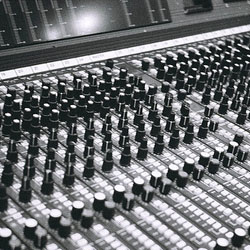Editor’s Note: Although this article first appeared on the site in 2011, the foundational information for studio engineers is worth repeating.
Technical preparation is the most mundane of all the tasks.
So mundane, in fact, that many A-listers either hire someone or have their assistant do all of this work.
That being said, the technical prep may be the most important time you spend on some projects, because it’s where you tighten up the individual performances and take them to new level.
1) Make A Copy Of The Session
The first thing is to make a copy of your session and label it in such a fashion that you can tell what it’s for.
Something like “songname edits 4-4-11” or “songname voc comp” tells you exactly what’s happening at a glance. I like to put the date in the name as well.
If you have multiple versions of the session in one day, I’ll differentiate one from another with letters of the alphabet at the end like “songname edits 4-4-11a”, “songname edits 4-4-11b” and so on.
While you’re at it, make a copy of the session file on another hard drive, flash drive, online backup, or any place that you can easily grab it if for some reason you find the file you’re working on is suddenly corrupted.
2) Tweak The Timing
No matter how great the players on the session are, there’s always some portion of a player’s recording that doesn’t feel quite right.
The exception being that you have enough time to have the musician play their part until it’s perfect, or you punch in all the suspect parts as you go along.
Usually, the timing of the basic tracks will be tweaked right after your tracking session so you have a solid rhythm section to overdub against, but if you’ve not done that or you’re just now discovering some sections that don’t feel right (which happens a lot), prepare for the joys of slipping and sliding time.
Of course, if you’re using loops or MIDI instruments, you’ve probably quantized things to the track by now. If you haven’t, now’s the time.
3) Eliminate Any Noises
Now is the time to clean up each individual track. While the noises might not sound too bad with the rest of the track, after everything is mixed and mastered you’d be surprised how something that was buried can come to the forefront.
Also, by eliminating any extraneous noises, all the tracks magically sound distinct and uncluttered.
Trim the heads and tails: Trim all the extra record time at the beginning and end of each track, regardless of whether it was recorded during basics or overdubs. Add a fade-in and fade-out to eliminate any edit noise.
Crossfade your edits: One of the biggest problems for A-list mixers is when they get a session in that’s full of edits to make the track sound tight, but the edits click and pop because they don’t contain any cross-fades.
Even if you can’t hear a click or pop, it’s a good practice to have a short cross-fade on every edit to eliminate the possibility of an unwanted noise.
Delete extra notes from Midi tracks: Delete any extra “split” notes that were mistakenly played.
You might not hear them when all the instruments are playing, but just like the noise at the beginning of tracks, they have a tendency to come to the forefront after things get compressed.
4) Do Any Necessary Comping
Comping shouldn’t be left for mixing as it’s something that’s normally taken care of directly after an overdub session for either the vocal, guitar or anything else that required multiple takes.
That being said, if you still have some vocal or overdub comping to do, now’s the time.
5) Do Any Necessary Tuning
Inevitably there’s always a note that’s a bit sour and needs tuning.
Whether you use Autotune, Elastic Audio, or any other pitch correction plug-in, make sure that the timing isn’t thrown off when the note is shortened or lengthened.
Bobby Owsinski is an author, producer, music industry veteran and technical consultant who has written numerous books covering all aspects of audio recording. For more information be sure to check out his website and blog. Go here to check out The Mixing Engineer’s Handbook.





















